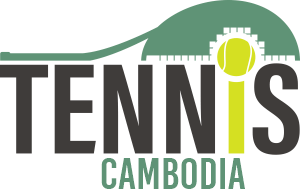Introduction to Tennis Strength Training
Tennis is a demanding sport that requires a unique combination of strength, power, endurance, and agility. To excel on the court, players must develop a strong foundation of physical fitness. Strength training is an essential component of any tennis player’s training regimen, as it enhances performance and helps prevent injuries. By focusing on key areas such as core strength, upper body strength, and lower body strength, tennis players can improve their game and take their skills to the next level.
Why Strength Training is Essential for Tennis Players
Strength training offers numerous benefits for tennis players. First and foremost, it helps prevent injuries by strengthening muscles, tendons, and ligaments. Tennis players are prone to overuse injuries, such as tennis elbow and shoulder impingement, due to the repetitive nature of the sport. By incorporating strength training exercises into their routine, players can reduce their risk of these common injuries.
In addition to injury prevention, strength training also enhances performance on the court. Stronger muscles generate more power, allowing players to hit the ball with greater force and precision. Improved strength also contributes to better endurance, enabling players to maintain their level of play throughout long matches.
Key Areas of Focus: Core, Upper, and Lower Body Strength
When designing a strength training program for tennis, it’s important to focus on three key areas: core strength, upper body strength, and lower body strength.
The core muscles, which include the abs, lower back, and obliques, are crucial for stability and power. A strong core allows players to maintain proper posture and balance while executing shots. Exercises like planks, Russian twists, and medicine ball slams are excellent for building core strength.
Upper body strength is essential for powerful serves and groundstrokes. The shoulders, chest, back, and arms all play a role in generating force behind the ball. Push-ups, pull-ups, and dumbbell rows are effective exercises for developing upper body strength.
Lower body strength is vital for quick movements and explosive power on the court. Strong legs enable players to change direction rapidly and lunge for shots. Squats, lunges, and deadlifts are fundamental exercises for building lower body strength.
Top Strength Training Exercises for Tennis Players
When selecting exercises for a tennis strength training program, it’s important to choose movements that mimic the demands of the sport. Functional exercises that engage multiple muscle groups and replicate tennis-specific movements are ideal. Here are some of the top strength training exercises for tennis players:
Core Strength Exercises
| Exercise | Description |
|---|---|
| Medicine Ball Slam | Lift a medicine ball overhead, then forcefully slam it to the ground. This exercise builds explosive power in the core and upper body. |
| Medicine Ball Standing Twist | Hold a medicine ball with both hands and twist from side to side. This movement targets the obliques and improves rotational strength. |
Upper Body Strength Exercises
- Push-ups: A classic exercise that strengthens the chest, shoulders, and triceps. Perform push-ups with hands slightly wider than shoulder-width apart.
- Pull-ups: Hang from a pull-up bar with an overhand grip and pull your chin above the bar. This exercise targets the back and biceps.
- Dumbbell Bent-Over Row: Hold a dumbbell in each hand and hinge forward at the hips. Row the dumbbells up towards your chest, squeezing your shoulder blades together.
Lower Body Strength Exercises
| Exercise | Description |
|---|---|
| Goblet Squat | Hold a dumbbell or kettlebell at chest level and perform a squat, keeping your chest up and core engaged. |
| Barbell Squat | Position a barbell on your upper back, then lower into a squat, keeping your chest up and weight on your heels. Drive through your heels to return to standing. |
| Romanian Deadlift | Hold a barbell or dumbbells in front of your thighs, then hinge forward at the hips, keeping your back straight. Lower the weight towards the ground, feeling a stretch in your hamstrings. |
Periodization in Tennis Strength Training
Periodization is a strategic approach to training that involves dividing the year into specific phases, each with a distinct focus. For tennis players, periodization helps ensure that they peak at the right times and avoid overtraining. A typical periodization plan for tennis includes four main phases:
Early Pre-Season: Building Functional Strength
The Early Pre-Season phase focuses on building a foundation of functional strength. During this time, players should emphasize exercises that target multiple muscle groups and improve overall strength. Compound movements like squats, deadlifts, and push-ups are ideal for this phase. The goal is to build muscle size (hypertrophy) and prepare the body for more intense training later on.
Late Pre-Season: Maximizing Power
As the season approaches, the focus shifts to maximizing power. Exercises in the Late Pre-Season phase should be more explosive and tennis-specific. Plyometric exercises, such as medicine ball throws and jump squats, are excellent for developing power. Resistance training should involve lighter weights and faster repetitions to mimic the quick, powerful movements required on the court.
In-Season: Maintaining Strength and Power
During the competitive season, the goal is to maintain the strength and power developed in the pre-season phases. Training volume should be reduced to prevent overtraining and allow for adequate recovery between matches. Maintenance workouts should include a mix of strength and power exercises, with an emphasis on quality over quantity.
Break Season: Recovery and Cross-Training
The Break Season is a time for players to rest, recover, and engage in cross-training activities. While it’s important to allow the body to heal after a long season, players should still maintain a base level of fitness. Light resistance training, yoga, and other low-impact activities can help prevent deconditioning and prepare players for the next pre-season phase.
Injury Prevention Strategies for Tennis Players
Injury prevention is a key concern for tennis players. The repetitive nature of the sport, combined with the high-impact forces involved, can lead to various overuse injuries. By incorporating specific exercises and techniques into their training routine, players can reduce their risk of common tennis injuries.
Common Injuries in Tennis and How to Prevent Them
Some of the most common injuries in tennis include:
- Tennis Elbow: An overuse injury causing pain on the outside of the elbow. Strengthening the forearm muscles and using proper technique can help prevent tennis elbow.
- Shoulder Impingement: Inflammation of the tendons in the shoulder, often caused by repetitive overhead motions. Rotator cuff exercises and proper serving technique can reduce the risk of shoulder impingement.
- Lower Back Pain: Often caused by the repetitive twisting motion of the serve. Core strengthening exercises and proper serving mechanics can help alleviate lower back pain.
Exercises for Injury Prevention
Incorporating specific exercises into a strength training program can help prevent common tennis injuries. Some effective exercises include:
- Rotator Cuff Exercises: Strengthening the rotator cuff muscles helps stabilize the shoulder joint and prevents impingement. External rotation exercises with resistance bands or dumbbells are particularly effective.
- Wrist and Forearm Exercises: Strengthening the wrist and forearm muscles can help prevent tennis elbow. Wrist curls, reverse wrist curls, and squeezing a tennis ball are simple but effective exercises.
- Core Stability Exercises: A strong, stable core helps protect the lower back and improves overall balance. Planks, bird dogs, and dead bugs are excellent exercises for building core stability.
Enhancing Performance with Plyometric Exercises
Plyometric exercises are a type of high-intensity training that involves quick, powerful movements. These exercises are designed to improve power, speed, and agility – all crucial components of tennis performance. By incorporating plyometric exercises into their strength training routine, tennis players can take their game to the next level.
Benefits of Plyometric Training for Tennis
Plyometric training offers several benefits for tennis players:
- Improved Power: Plyometric exercises train the muscles to generate maximum force in a short amount of time, leading to more powerful shots on the court.
- Enhanced Speed: The explosive nature of plyometric movements helps improve speed and acceleration, allowing players to reach balls faster.
- Increased Agility: Plyometric exercises that involve lateral movements and quick changes of direction can enhance a player’s agility on the court.
Top Plyometric Exercises for Tennis Players
Here are some of the most effective plyometric exercises for tennis players:
| Exercise | Description |
|---|---|
| Medicine Ball Slam | Lift a medicine ball overhead, then forcefully slam it to the ground. This exercise builds explosive power in the upper body and core. |
| Medicine Ball Push-Press | Hold a medicine ball at shoulder level, then quickly press it overhead. This movement mimics the serve motion and improves power in the upper body. |
| Jump Squats | Perform a squat, then explode upwards into a jump, landing softly back into a squat position. This exercise builds power in the lower body. |
| Lateral Skaters | Leap laterally from one leg to the other, as if skating side to side. This exercise improves lateral speed and agility. |
The Role of Nutrition and Recovery in Tennis Strength Training
Nutrition and recovery are often overlooked aspects of strength training, but they play a crucial role in optimizing performance and preventing injury. Without proper nutrition and recovery strategies, even the most well-designed strength training program will fall short of its potential.
Nutritional Guidelines for Tennis Players
Tennis players have unique nutritional needs due to the demands of the sport. Here are some general guidelines for optimizing nutrition:
- Consume adequate calories: Players need to consume enough calories to fuel their training and matches. Calorie needs vary based on factors such as age, gender, and training volume.
- Focus on carbohydrates: Carbohydrates are the primary fuel source for high-intensity exercise like tennis. Aim to consume a variety of complex carbohydrates, such as whole grains, fruits, and vegetables.
- Include lean proteins: Protein is essential for muscle recovery and repair. Good sources of lean protein include chicken, fish, tofu, and legumes.
- Stay hydrated: Proper hydration is crucial for maintaining performance, especially in hot and humid conditions. Drink water or sports drinks before, during, and after training and matches.
Recovery Techniques for Optimal Performance
Recovery is just as important as the training itself. Without adequate recovery, players risk overtraining, burnout, and injury. Here are some effective recovery techniques for tennis players:
- Get enough sleep: Aim for 7-9 hours of quality sleep each night to allow the body and mind to recover.
- Stretch and foam roll: Stretching and foam rolling can help improve flexibility, reduce muscle soreness, and prevent injury.
- Use active recovery: On rest days, engage in light, low-impact activities like walking, swimming, or yoga to promote blood flow and recovery.
- Consider massage: Regular massage can help reduce muscle tension, improve circulation, and promote relaxation.
Consulting with a Coach or Trainer
While it’s possible to design a strength training program on your own, working with a qualified coach or trainer can take your training to the next level. A professional can help you create a personalized program that targets your specific needs and goals, while also ensuring proper form and technique.
Benefits of Professional Guidance
There are several benefits to working with a coach or trainer:
- Personalized programming: A coach can create a strength training program that is tailored to your individual needs, taking into account factors such as your playing style, injury history, and goals.
- Proper form and technique: Executing exercises with proper form is crucial for maximizing results and preventing injury. A coach can provide guidance and feedback to ensure you’re using correct technique.
- Accountability and motivation: Having a coach to hold you accountable and provide motivation can help you stay on track with your training, even when things get tough.
Monitoring Progress and Adjusting Training Routines
As you progress through your strength training program, it’s important to monitor your results and make adjustments as needed. A coach can help you track your progress, identify areas for improvement, and modify your program based on your evolving needs and goals.
Some factors to consider when monitoring progress and adjusting your routine include:
- Strength gains: Are you getting stronger over time? If you’re not seeing improvements in your lifts, it may be time to adjust your program.
- Performance on the court: How is your strength training translating to your tennis game? If you’re not seeing the desired improvements in your playing, your coach may need to modify your program.
- Recovery and fatigue levels: Are you recovering well between training sessions, or are you feeling excessively fatigued? If you’re not recovering adequately, your coach may need to adjust your training volume or intensity.
By working closely with a coach or trainer and regularly monitoring your progress, you can ensure that your strength training program is optimized for your specific needs and goals. With a well-designed program and a commitment to consistent training, you can take your tennis game to new heights and achieve peak performance on the court.






